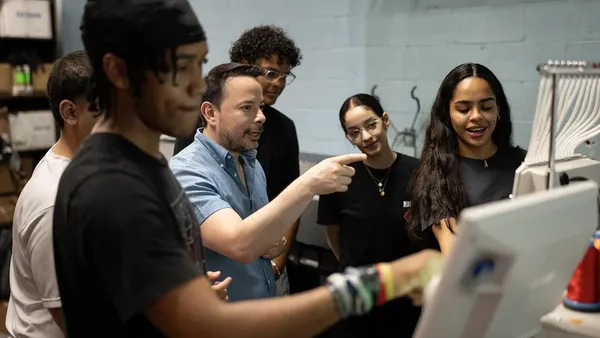Dive Brief:
- Universal design for learning (UDL) starts with understanding all students are different and how that’s normal, as detailed in an eSchoolNews Q&A with Katie Novak, assistant superintendent of schools at the Groton-Dunstable (MA) Regional School District.
- However, UDL is not the same as differentiated instruction, which asks teachers to create lessons for specific needs within small groups of students — it instead tries to address all students’ needs with a program that covers as many pupils as possible at once, and that difference is something teachers need to know before implementing UDL.
- To work successfully within a UDL framework, however, Novak points out that educators need training and in-depth professional development so they can learn to amend how they teach as classes and students progress.
Dive Insight:
The idea of creating lessons based on UDL is easily confused with differentiated instruction. Both take into account the idea that students learn in different ways, with different styles and different needs.
But UDL is a concept that challenges educators to create a universal plan that envelops all students in its programming. Instead of tailoring curriculum to each child’s needs, the idea is to create a situation where each child feels included in the whole. A 2017 meta-analysis of the UDL approach concurred that this style “…is an effective teaching methodology for improving the learning process for all students,” wrote researchers.
For curriculum designers who want to get started, professional development for teaching staff and administrators must be part of the plan. A solid resource to tap is CAST, which has worked with public school districts in California, Indiana, Maryland and New York City, according to its web site. The organization also offers online courses for educators tailored to developing UDL lessons for specific disciplines, including science.
Accommodating all students where they are, but in a way that doesn't single them out for their needs, is crucial. It’s the difference between a student knowing they’re getting a substitution from the norm and a student who feels they are the norm.











